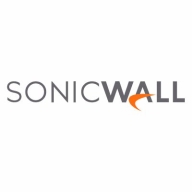

Cisco Wireless and SonicWall SonicWave Access Points compete in the wireless access point market. Cisco Wireless appears to have an upper hand in reliability and network performance, while SonicWall SonicWave stands out for advanced security features.
Features: Cisco Wireless offers high-performance throughput, seamless connectivity, and advanced network management tools. SonicWall SonicWave Access Points focus on superior security protocols, integrated threat detection, and streamlined access management. The focus of Cisco is on network performance, whereas SonicWall prioritizes security.
Ease of Deployment and Customer Service: Cisco Wireless provides an intuitive deployment model with comprehensive support and documentation, ensuring straightforward installation. SonicWall SonicWave Access Points offer reliable customer service, emphasizing secure deployment processes. While Cisco is recognized for its ease of deployment, SonicWall prioritizes security-oriented implementation.
Pricing and ROI: Cisco Wireless generally has a higher initial setup cost, delivering ROI through network efficiency and lower maintenance expenses. SonicWall SonicWave Access Points are cost-effective with competitive pricing, offering good ROI through enhanced security measures. Cisco's value is rooted in performance efficiency, while SonicWall justifies pricing with significant security benefits.


Cisco Wireless is a comprehensive suite of wireless solutions designed to deliver secure, high-performance connectivity for enterprises of all sizes. Offering a range of access points, controllers, and advanced management tools, Cisco Wireless ensures seamless and reliable network access, enhancing mobility and productivity.
Cisco Wireless solutions provide robust, scalable wireless networks capable of supporting high-density environments and diverse applications. With features such as seamless roaming, advanced security protocols, and detailed analytics, Cisco Wireless addresses the needs of modern businesses. The solutions include the Cisco Catalyst and Aironet series access points, wireless LAN controllers, and the Cisco DNA Center for centralized management and automation.
What are the key features of Cisco Wireless?
What benefits should users look for in reviews when evaluating Cisco Wireless?
Cisco Wireless solutions are implemented across various industries, including healthcare, education, retail, and manufacturing. In healthcare, they support critical applications like patient monitoring and electronic health records. Educational institutions use Cisco Wireless to provide reliable internet access for students and staff. Retailers benefit from enhanced customer experiences through in-store connectivity, while manufacturers use wireless networks to improve operational efficiency and automation.
Pricing and licensing for Cisco Wireless solutions are typically based on the scale of deployment and specific product selections. Cisco offers various support plans, including 24/7 customer service, technical support, and access to software updates and patches.
In summary, Cisco Wireless provides robust, scalable wireless networking solutions that enhance connectivity, security, and management for diverse enterprise environments.
SonicWall SonicWave series wireless access points (APs) combine high-performance IEEE 802.11ac Wave 2 wireless technology with flexible deployment options. These APs can be managed via the cloud using SonicWall WiFi Cloud Manager (WCM) or through SonicWall's industry-leading next-generation firewalls.
We monitor all Wireless LAN reviews to prevent fraudulent reviews and keep review quality high. We do not post reviews by company employees or direct competitors. We validate each review for authenticity via cross-reference with LinkedIn, and personal follow-up with the reviewer when necessary.